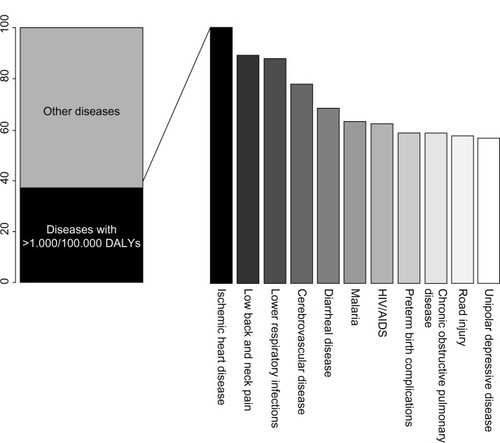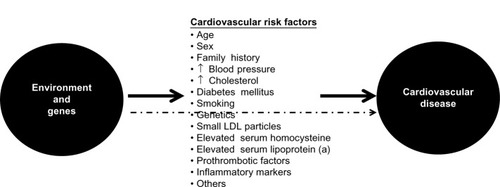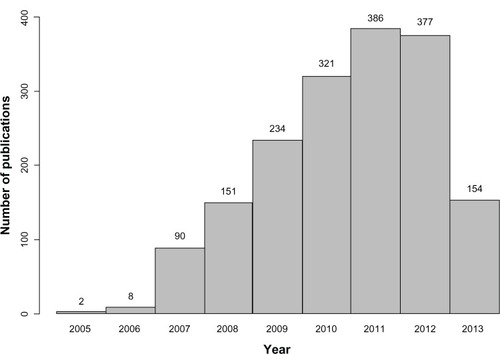Figures & data
Figure 1 The top eleven diseases explain 37.7% of the global burden of disease measured as DALYs, with coronary artery disease as the leading cause of DALYs in 2010.

Figure 2 Genetic and environmental causes of development and progression of atherosclerosis act directly or through known intermediate traits.

Table 1 Main results of different studies analyzing the heritability of several phenotypes associated with arteriosclerosis
Figure 3 Number of articles published per year according to the genome-wide association studies catalog (accessed on September 27, 2013).

Table 2 Comparison between candidate gene studies and GWAS
Table 3 Summary of main findings of most recent meta-analysis of genome-wide association studies in coronary artery disease, showing the lead single nucleotide polymorphism of each locus, the closest gene, chromosomal location, risk allele and frequency, P-value, and effect size of the reported associations
Table 4 Summary of main findings of most recent meta-analyses of genome-wide association studies of cardiovascular risk factors, showing the lead single nucleotide polymorphism of each locus, the closest gene, chromosomal location, risk allele and frequency, and P-value of the reported associations
Table 5 Main characteristics and results of studies assessing improvement of predictive capacity of classical cardiovascular risk functions after inclusion of genetic information
